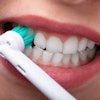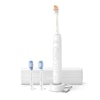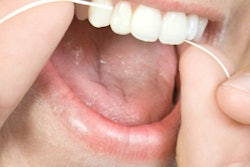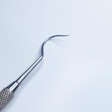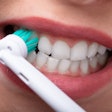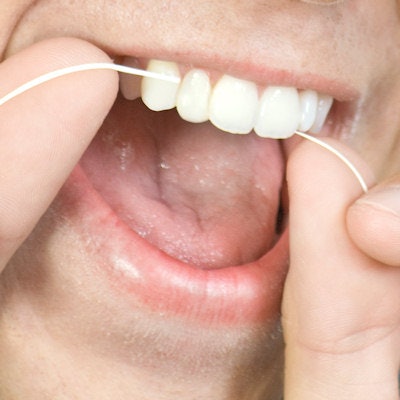
Do your patients continue to ask if they have to floss? U.S. researchers looked at the evidence for flossing and offered seven strategies for talking about it with your patients.
In an editorial published in the Journal of Evidence-Based Dental Practice, the researchers wrote that the evidence against flossing may be weak and that patients, especially those at a higher risk for caries, need to be directly encouraged to floss.
"Many dental patients have a unique and/or challenging dentition that may require modifications to how they floss and/or use dental cleaning aids," wrote Lance Vernon, DMD, PhD, and Jason Seacat, PhD (J Evid Based Dent Pract, June 2017, Vol. 17:2, pp. 71-75). "Here, the challenge may be how the practice of flossing is communicated to the individual patient."
Dr. Vernon is a senior instructor in the department of pediatric dentistry and community dentistry at the Case Western Reserve University School of Dental Medicine in Cleveland. Dr. Seacat is an associate professor in the department of psychology at Western New England University in Springfield, MA.
Clinical evidence
The Associated Press (AP) cast into question the clinical evidence supporting the practice of flossing in a 2016 report. The AP examined 25 peer-reviewed studies on the effectiveness of flossing and found weak or unreliable evidence that flossing had long-term benefits. Also, the recommendation for flossing to promote oral health was removed from the "2015-2020 Dietary Guidelines for Americans."
The authors of the editorial wondered if the evidence related to the effectiveness of flossing and caries prevention was being misinterpreted by health oversight bodies, especially when it concerns patients at a high risk for caries. They offered two short case examples of instances in which flossing would be helpful both in the short- and long-term, then concluded with seven ideas for communicating flossing's importance to patients.
The authors noted that flossing overviews cited in the AP report contained several methodological deficiencies:
- A lack of validated measures of flossing skill
- An overreliance on self-reported flossing behavior
- A lack of current guidelines on how to interpret and apply evidence-based findings to specific clinical scenarios
This current lack of evidence regarding flossing creates some treatment dilemmas, the authors wrote. They use the example of patients who cannot reach or appropriately floss between certain teeth, such as between posterior teeth No. 2 and No. 3. If these were your patients, you would like them to both floss and use an appropriately sized proxy brush in this area. But many patients are unaware of how to use these cleaning aids and need professional guidance, the authors noted.
“Adequately tailoring patient recommendations would likely lead to greater flossing adoption and ongoing maintenance.”
Another example is how to communicate appropriate skills to the parents of a 3-year-old child with some risk factors for dental caries and who has three areas in her mouth where two teeth touch each other. The authors argued clinically that a parent should floss between specific teeth that touch because enamel is thin on these teeth and caries can quickly develop.
Regular dental cleanings, limited intake of added or processed sugar, and an increase in topical fluoride exposure could help prevent dental caries in the above and other patients, they noted.
"But such expectation may not be realistic with all parents of young children -- especially if essential details (why, when, and how) of flossing were not adequately communicated by oral health professionals," the authors wrote.
They added that patients may have a unique or challenging dentition that may require modifications to how they floss or use dental cleaning aids, and the challenge for practitioners is how to communicate with these patients and their parents.
To address this, the authors offered a set of recommended strategies for communicating with patients based on existing health theory:
- Show specific problematic flossing sites to patients with a handheld mirror.
- Explain and point out any current problem areas, and show a photograph of possible outcomes of not cleaning these sites properly.
- Encourage patient buy-in and involvement by asking them if they would be willing to learn strategies to avoid such outcomes in the future.
- Show patients how to effectively clean these areas with an appropriate oral hygiene aid, such as floss, proxy brush, or other interdental cleaning aid.
- Verify with patients that they understood your instructions and possess the ability to perform specific techniques. Based on their feedback, modify your expectations and simplify the technique by focusing instructions on initial steps of learning.
- Assess patient motivation to perform the recommended behaviors with simple questions, such as "Are you willing to floss like this every day or every other day?" or "It can be hard to develop the habit or it may be hard at first. Could you floss four teeth every day and then add two more teeth each week?"
- Follow-up with patients during future dental visits, ask how it's going, whether they had any unforeseen challenges, and reassess their flossing skill.
These steps may need to be repeated with individual patients, the authors noted.
New measure
In response to the limitations of flossing studies, specifically the lack of direct observation of patient flossing, the authors announced a new measure of how well a person brushes and flosses their teeth: the Oral Hygiene Skills Mastery (OHSIM). Once this measure is proved reliable and provisionally valid, it could also be used in future clinical studies, they noted.
The authors concluded by recommending that oral health providers use a patient's clinical presentation, caries risk assessment, and other sociodemographic factors to create an individual presentation for each patient.
"Adequately tailoring patient recommendations would likely lead to greater flossing adoption and ongoing maintenance," they wrote. "Furthermore, such prevention-focused behaviors would likely lower the risk for dental caries."


